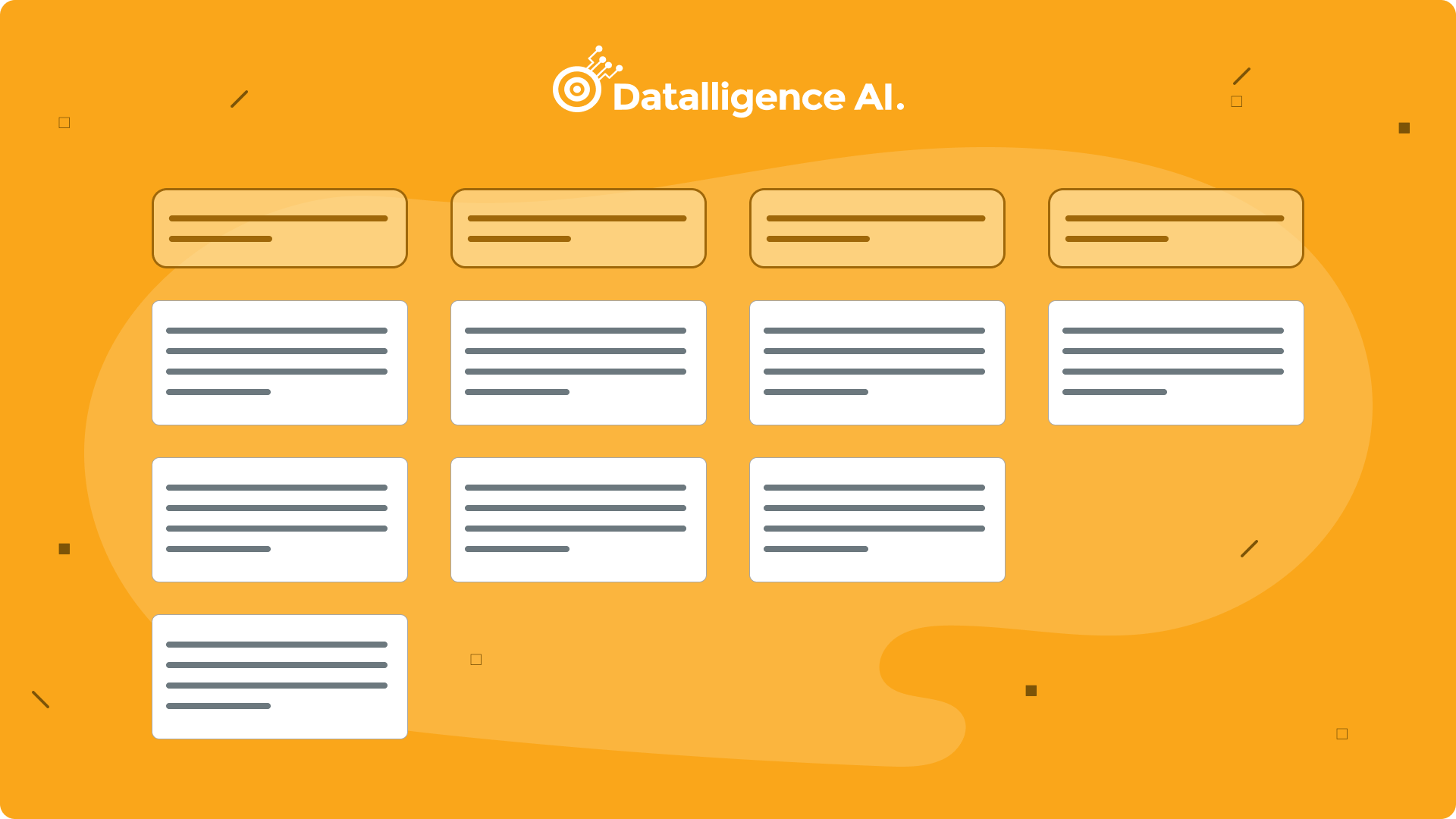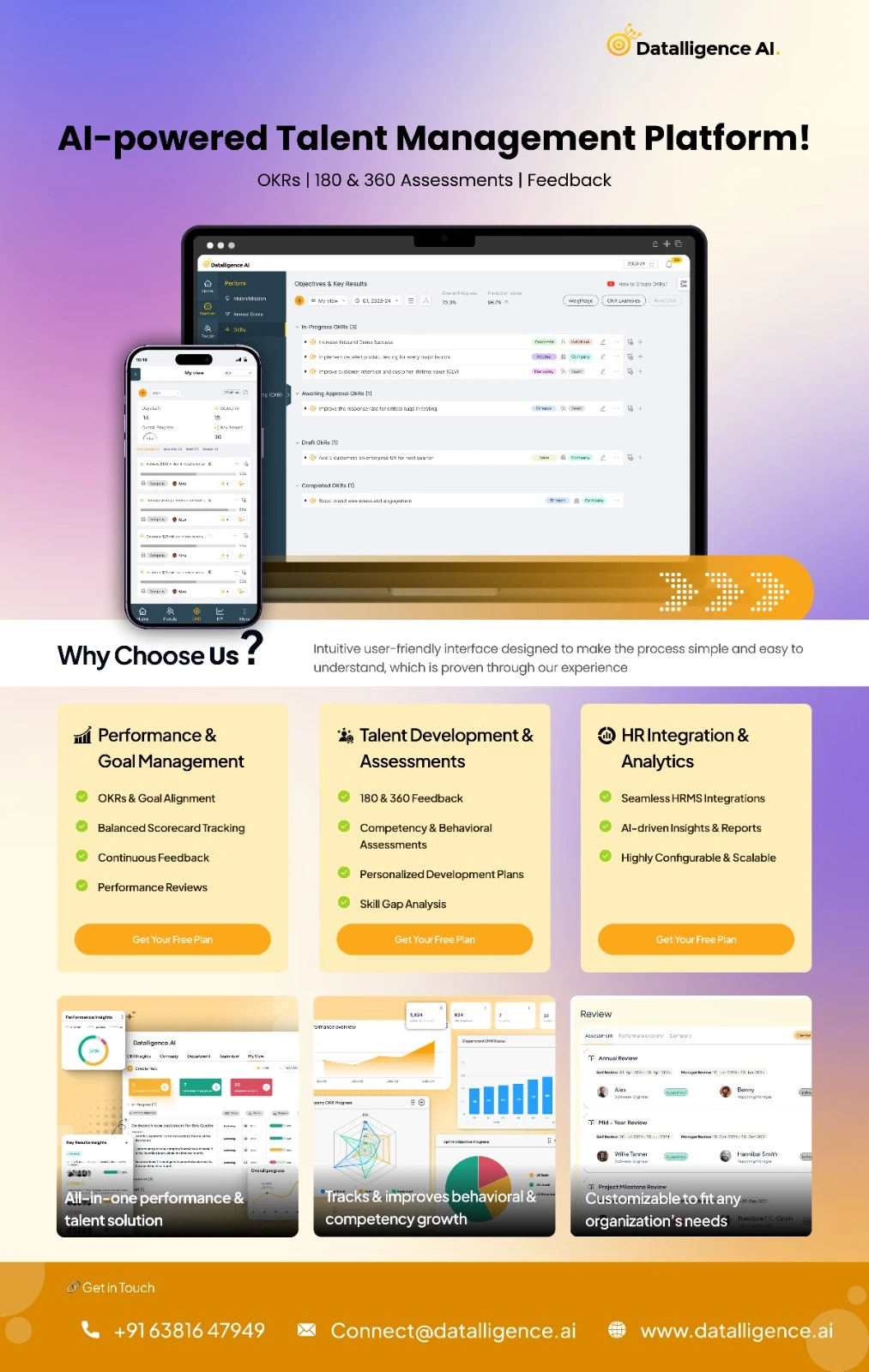At first glance, OKRs and Kanban might seem like polar opposites. One is a strategic framework emphasizing high-level objectives, while the other is a visual tool for task management. But in the realm of modern productivity, synergizing these two can create a powerhouse system that offers both macro oversight and micro-management. Buckle up, and let’s delve into this exciting intersection of two seemingly disparate methodologies.
What is Kanban
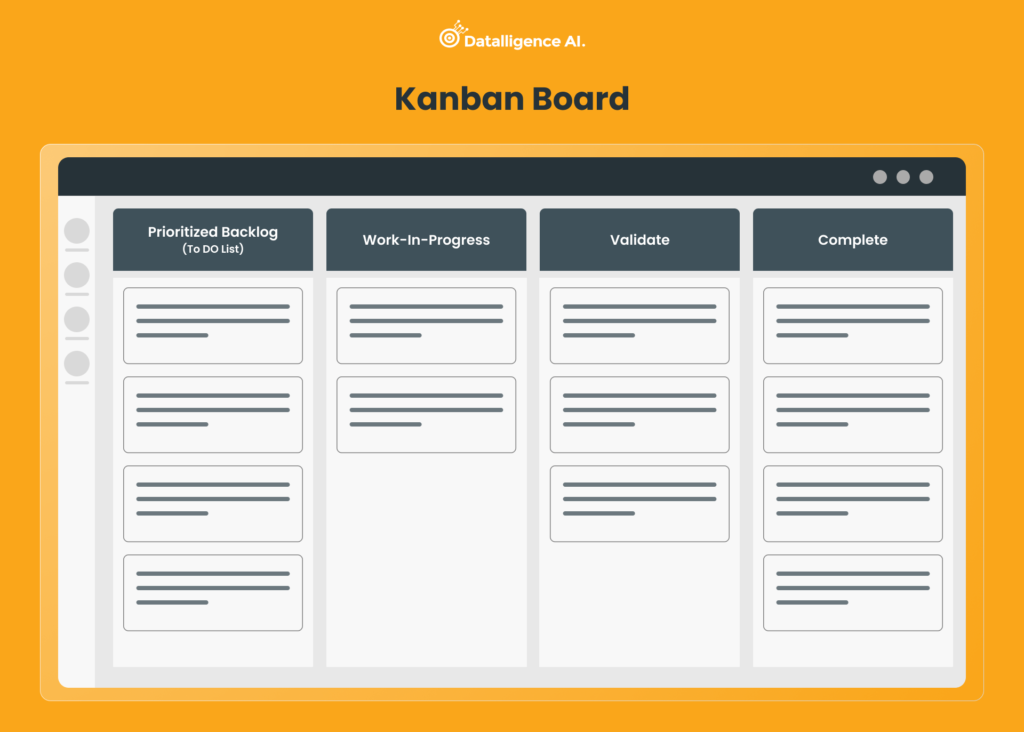
Kanban is a project management and workflow optimization methodology originating from lean manufacturing principles. It was developed by Taiichi Ohno at Toyota to improve manufacturing efficiency. “Kanban” is derived from the Japanese words “kan” (visual) and “ban” (card), meaning “visual card” or “signal card.”
In project management and software development, Kanban visualizes and manages work through visual boards with columns representing stages of a process. Work items are represented by cards that move between columns as they progress.
For example, in software development, a more detailed Kanban board might include columns like “Backlog,” “Design,” “Development,” “Testing,” and “Deployed.”
Key concepts of Kanban include:
- Visual Board: Represents the workflow using columns and cards.
- Work in Progress (WIP) Limits: Sets maximum cards per column to maintain flow.
- Pull System: Work moves to the next stage only when there’s capacity.
- Continuous Improvement: Regularly reviews processes for optimization.
- Flexibility: Adaptable to changing priorities and requirements.
- Metrics: Uses data for process improvements.
Kanban is compared to Scrum, with Kanban focusing on continuous flow without fixed time intervals. It’s used in various industries for workflow management and productivity enhancement.
How can OKRs and Kanban be combined?
OKRs and Kanban are powerful tools for business progress. While OKRs set clear objectives and measurable outcomes, like aiming to “Reduce customer ticket response time to under 2 hours,” Kanban visualizes the tasks to achieve them. Consider a Kanban board with columns like “Backlog,” “In Progress,” and “Done.” To achieve the mentioned OKR, tasks such as “Train customer support team” or “Integrate new ticketing system” can populate the board.
As teams tackle tasks, they move them across columns, ensuring focus and minimizing multitasking through work-in-progress limits.
Essentially, OKRs provide direction—the “why” and “what”—while Kanban outlines the journey—the “how.” Together, they offer a synchronized approach to goal-setting and execution, ensuring clarity, focus, and efficient achievement of objectives.
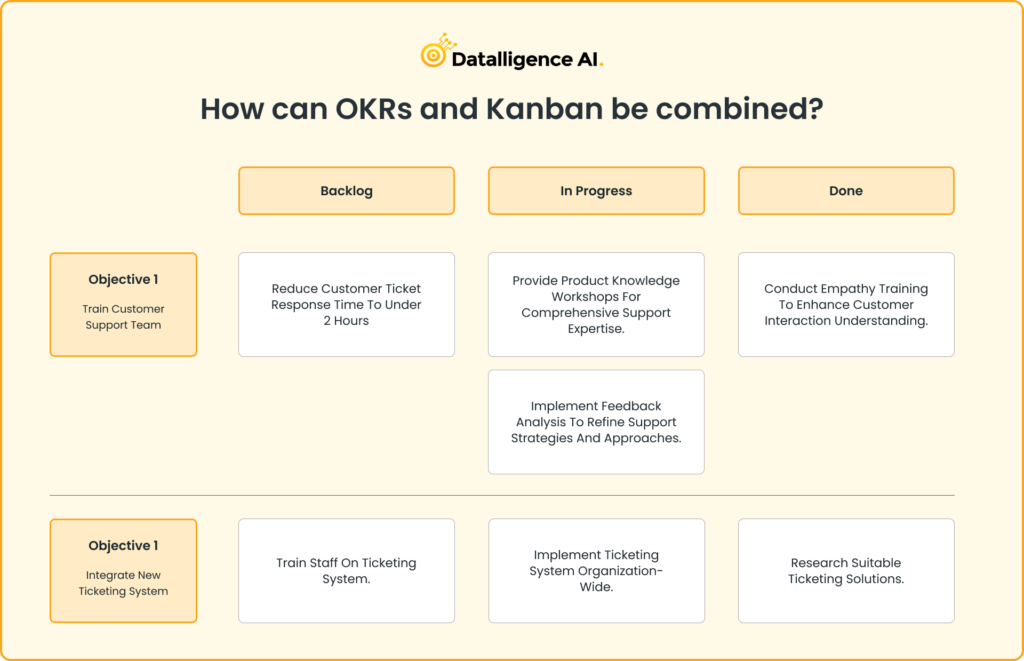
Differences Between OKRs and Kanban

Advantages of Integrating OKRs into Kanban
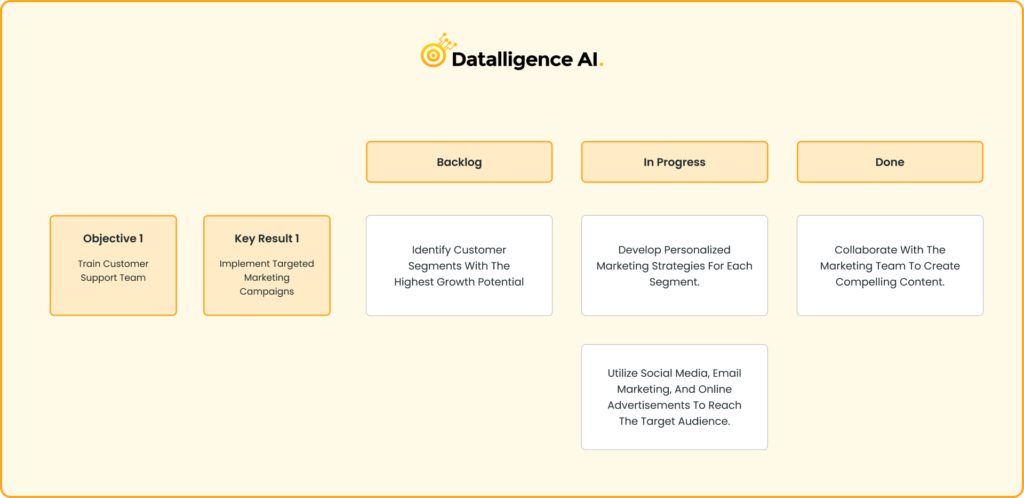
- Clarifies priorities by aligning tasks with overarching objectives.
- Enhances focus on key results while progressing through the Kanban board.
- Improves team alignment and understanding of organizational goals.
- Boosts motivation by visualizing the link between daily tasks and big-picture outcomes.
- Facilitates better decision-making on task prioritization.
- Encourages regular review and adjustment based on progress toward objectives.
- Helps in quickly identifying and addressing bottlenecks hindering key results.
- Fosters a culture of continuous improvement aligned with strategic goals.
- Simplifies the process of tracking and measuring progress in real time.
- Strengthens collaboration as teams work cohesively towards common objectives.
Challenges In Combining OKR and Kanban
Combining OKRs (Objectives and Key Results) with Kanban presents some inherent challenges because these frameworks serve different primary purposes: OKRs are more about setting and achieving objectives, while Kanban is about visualizing and managing workflow. Here are two main challenges when trying to combine them:
Alignment Between Objectives and Workflows
- Differing Focus: OKRs (Objectives and Key Results) emphasize high-level goals and measurable outcomes. In contrast, Kanban focuses on streamlining workflows and improving efficiency. When trying to integrate both, there’s a risk of misalignment where teams might get too bogged down in day-to-day tasks and lose sight of overarching objectives.
- Granularity Mismatch: OKRs are usually broad and can span multiple teams or an entire organization, whereas Kanban tasks are more granular, relating to specific team activities. This discrepancy can make it challenging to directly tie specific Kanban tasks to OKRs without intermediary steps.
Balancing Flexibility with Direction
- Changing Priorities: The agile nature of Kanban allows for quick changes and flexibility in response to real-time demands. However, if teams constantly shift their focus, it might undermine the stability required to achieve longer-term OKRs. Striking a balance between short-term agility and long-term goals becomes crucial.
- Measurement Challenges: OKRs are typically reviewed quarterly, encouraging reflection on larger goals. In contrast, Kanban’s continuous flow might not provide natural checkpoints for reflection, making it difficult to consistently measure progress toward OKRs. Integrating both requires careful consideration of how and when to evaluate progress.
Monitoring and Tracking Progress
In any organizational setup, whether it’s a corporation, non-profit, or even a small team project, monitoring and tracking progress are critical. This ensures alignment with objectives, efficient resource allocation, and timely delivery. When combining OKRs (Objectives and Key Results) with a Kanban system, this becomes even more paramount.
Using Metrics and Data
Incorporating Kanban metrics like lead time and throughput can directly correlate with OKR targets. For instance, if the aim is faster product delivery, a key metric could be reducing lead time. This allows teams to measure, adjust, and align with objectives using tangible data.
Regular Review and Adaptation
Beyond metric collection, its application is vital. By setting regular checkpoints, teams assess their alignment with OKRs, pinpointing bottlenecks and making necessary strategy shifts. This continuous reflection ensures agility and alignment with set goals.
Tips for Integrating OKRs with Kanban for New Teams
Starting with OKR-Kanban integration can be daunting. Begin small, provide introductory resources, and prioritize clear communication. Ensure every team member understands the OKRs and how their tasks relate.
Embrace an iterative approach. Conduct regular reviews and use feedback for process refinement. Utilize tools that support both OKRs and Kanban for better automation and transparency.
Celebrate every milestone to boost team morale. Stay patient; while challenges arise from merging methodologies, persistence and a focus on continuous improvement will lead to success.
Conclusion
The process of OKRs and Kanban provides a holistic strategy-execution powerhouse. It aligns organizations strategically while ensuring that every task undertaken has a clear purpose.
For businesses ready to dive into this synergy, Datalligence.AI provides cutting-edge tools that marry OKRs and Kanban seamlessly. And if you need expert guidance in sculpting this integrated approach, an experienced OKR consultancy can be invaluable. In a competitive landscape, not only is it about setting the right goals but also executing them efficiently. This combination is the key to achieving just that. Talk to our experts and coaches and gain more insights or Try “Datalligence” for “Free”

